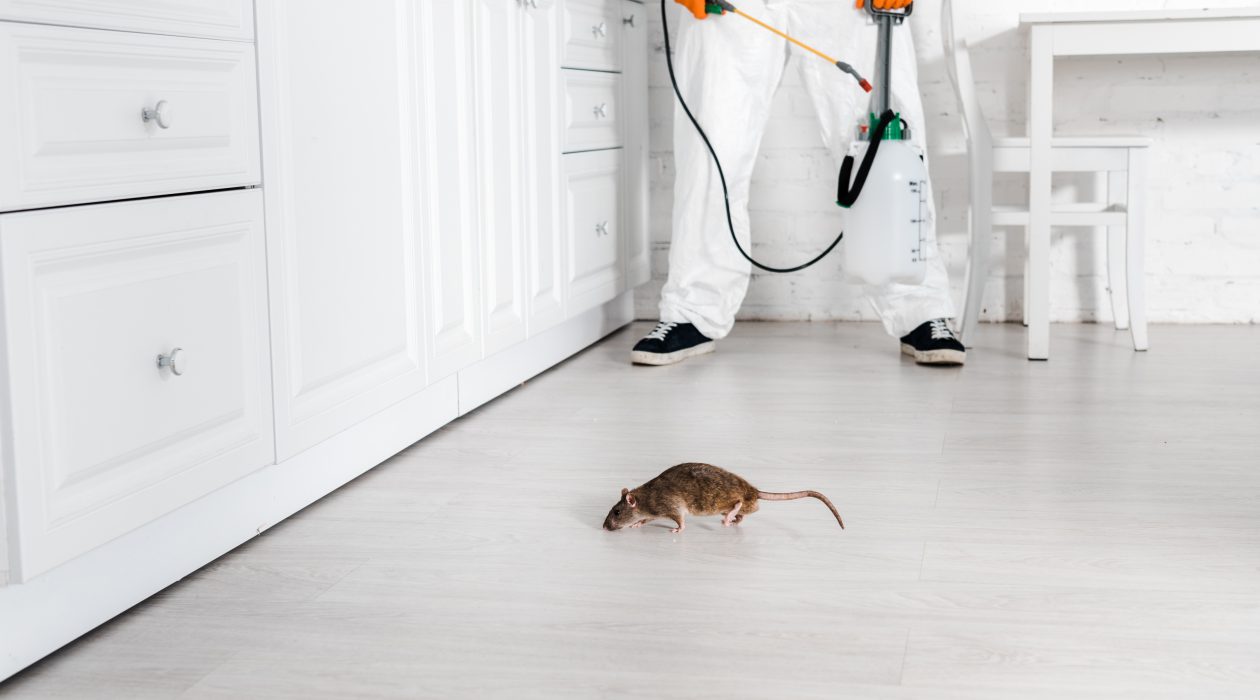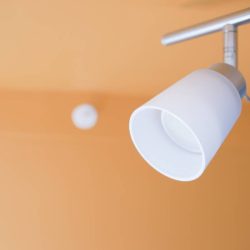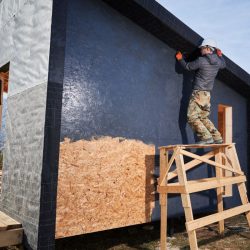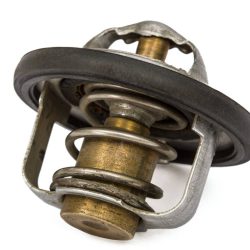Creating a rodent-proof environment is essential for maintaining a clean and secure home. Mice and rats not only pose health risks by carrying diseases but can also cause structural damage and disrupt the peace of your living space. To safeguard your home against these unwanted intruders, employing effective rodent-proofing measures is paramount.
In this guide, we’ll explore practical and easy-to-implement strategies, including the selection of the best sealants, to ensure your home remains a pest-free haven.
What is the best way to prevent rodent infestation?
Preventing rodent infestation is crucial for maintaining a healthy and hygienic living environment. Rodents, such as mice and rats, can carry diseases, contaminate food, and cause structural damage to homes. Employing effective prevention strategies is essential to keep these unwanted guests at bay. Here are some easy-to-follow tips to help you prevent rodent infestation:
- Seal Entry Points: Rodents can squeeze through surprisingly small openings, so it’s important to seal any cracks or gaps in your home’s exterior. Inspect doors, windows, and foundations for potential entry points, and use caulk or weather-stripping to seal them off.
- Maintain a Clean Environment: Rodents are attracted to food sources, so keeping your living spaces clean is a key prevention measure. Store food in airtight containers, promptly clean up spills, and regularly dispose of garbage in secure bins. By eliminating potential food sources, you make your home less appealing to rodents.
- Regularly Clean and Declutter: Clutter provides hiding spots for rodents. Regularly clean and declutter your living spaces to eliminate potential nesting sites. Pay special attention to storage areas, basements, and attics where rodents may find refuge.
- Proper Waste Management: Ensure that your garbage bins have tight-fitting lids, and promptly dispose of trash. Avoid leaving bags of garbage outside for extended periods, as this can attract rodents looking for an easy meal.
- Maintain Outdoor Spaces: Trim vegetation and keep a tidy yard. Overgrown shrubs and untrimmed grass provide hiding places for rodents. By maintaining your outdoor spaces, you reduce the likelihood of rodents finding a comfortable habitat near your home.
- Use Rodent-Resistant Materials: When possible, use materials that rodents can’t easily chew through. For example, consider using metal mesh or hardware cloth to cover openings, especially in areas prone to rodent intrusion.
- Install Screens and Vent Covers: Ensure that windows and vents are equipped with screens or covers to prevent rodents from entering your home. This is particularly important in areas where ventilation is necessary but can potentially serve as an entry point for rodents.
- Regularly Inspect Your Home: Conduct regular inspections of your home to catch potential issues early. Look for signs of rodent activity, such as droppings, gnaw marks, or evidence of nesting. Address any problems promptly to prevent a small issue from turning into a full-blown infestation.
- Use Natural Deterrents: Consider using natural deterrents like peppermint oil, cayenne pepper, or cloves, which are known to repel rodents. Place these deterrents strategically in areas where rodents may be tempted to enter.
- Consult Professionals: If you suspect a rodent infestation or want to take preventive measures proactively, consider consulting with pest control professionals. They can provide expert advice, assess your home for vulnerabilities, and offer effective solutions.
By incorporating these simple yet effective measures into your routine, you can significantly reduce the risk of rodent infestation, creating a safer and healthier living environment for you and your family.
How do you make rodent proofing?
Creating a rodent-proof environment is essential to keep unwelcome critters like mice and rats at bay. Rodent proofing involves implementing measures to prevent these pests from entering your home and causing potential health hazards. Here’s a comprehensive guide on how to make your living space rodent-proof in an easy-to-understand manner:
- Seal Entry Points: Begin by inspecting your home for any cracks, gaps, or openings where rodents could potentially enter. Seal these entry points using materials like caulk, steel wool, or weather-stripping. Pay attention to areas around doors, windows, pipes, and utility lines.
- Secure Doors and Windows: Ensure that doors and windows have tight-fitting screens and no gaps. Repair any damaged screens promptly, and consider adding door sweeps to the bottoms of exterior doors to prevent rodents from squeezing through.
- Use Rodent-Resistant Materials: Opt for materials that rodents can’t easily chew through. Replace plastic or wooden storage containers with metal ones, and use metal mesh or hardware cloth to cover openings in attics, crawl spaces, and other vulnerable areas.
- Maintain a Clean Environment: Rodents are attracted to food sources, so keeping your home clean is a powerful prevention strategy. Store food in airtight containers, clean up spills promptly, and regularly dispose of garbage in sealed bins. A tidy home reduces the appeal for rodents looking for an easy meal.
- Eliminate Outdoor Attractions: Rodents often find refuge in yards with overgrown vegetation or clutter. Trim shrubs and trees away from your home, and keep the yard tidy. Remove piles of debris, old furniture, or other items that could serve as hiding spots for rodents.
- Install Vent Covers: Cover vents with rodent-proof mesh or covers to prevent entry. Ensure that vents in crawl spaces and attics are adequately protected. Ventilation is essential, but it shouldn’t compromise your home’s integrity against rodents.
- Elevate Storage Items: If you have items stored in basements or garages, consider elevating them off the ground. This not only makes it more challenging for rodents to access but also facilitates easier cleaning and inspection.
- Regularly Inspect Your Home: Conduct routine inspections to catch potential vulnerabilities early. Look for signs of rodent activity, such as droppings or gnaw marks. Address any issues promptly to prevent a minor problem from turning into a full-blown infestation.
- Use Natural Deterrents: Employ natural deterrents like peppermint oil, cloves, or cayenne pepper. Rodents often dislike these scents, so placing them strategically around potential entry points can discourage them from entering.
- Consult Professionals: If you’re unsure about the effectiveness of your rodent-proofing measures or suspect a current infestation, it’s wise to consult with pest control professionals. They can assess your home, identify potential risks, and provide expert advice on further prevention strategies.
Implementing these rodent-proofing measures will significantly reduce the risk of infestation, creating a more secure and comfortable living space for you and your family. Regular maintenance and vigilance are key to keeping rodents at bay and ensuring a pest-free home.
What is the best sealant for mice?
Selecting the right sealant to keep mice at bay is a critical step in rodent-proofing your home. An effective sealant serves as a barrier, closing off potential entry points and preventing these unwanted guests from infiltrating your living spaces. When choosing a sealant for mice, consider the following factors for easy understanding:
- Steel Wool and Caulk Combo: One of the most effective and commonly recommended methods is using a combination of steel wool and caulk. Steel wool acts as a physical barrier that mice find difficult to chew through, while caulk seals gaps and cracks. Stuff steel wool into openings and cover it with caulk to create a sturdy and impenetrable barrier.
- Polyurethane Foam: Polyurethane foam sealants, available in spray cans, are another viable option. These foams expand to fill gaps and crevices, providing an airtight and water-resistant seal. Ensure to choose a foam labeled for pest control, as some mice may attempt to gnaw through standard foam.
- Silicone Sealant: Silicone sealants are durable and resistant to weather conditions, making them a good choice for outdoor use. They remain flexible over time, preventing cracks that mice could exploit. Use silicone sealant for gaps around windows, doors, and other exterior openings.
- Weather Stripping: For gaps around windows and doors, weather stripping is an effective and easy-to-install solution. It comes in various materials, including rubber and vinyl, and can be applied to create a tight seal, keeping mice from entering your home.
- Adhesive-Backed Metal Strips: Adhesive-backed metal strips, such as copper or aluminum, can be applied to areas where mice commonly enter. Mice find these metals difficult to gnaw through, and the adhesive ensures a secure attachment to surfaces like baseboards or door frames.
- Cement or Mortar: In areas where a more robust solution is needed, consider using cement or mortar to fill larger gaps or holes. These materials provide a solid barrier that mice cannot penetrate. Ensure that the surface is clean and dry before applying.
- Copper Mesh: Copper mesh is an excellent option for plugging holes and gaps. Mice dislike chewing through this material, and it can be easily shaped to fit irregular openings. After inserting copper mesh, seal the area with an appropriate sealant for added protection.
- Vinyl Patching Compound: Vinyl patching compounds are suitable for filling small cracks and holes. They are easy to apply and dry quickly. While not as sturdy as some other options, they can be effective for minor repairs and are readily available at hardware stores.
- Exterior Grade Sealants: When addressing outdoor entry points, opt for exterior-grade sealants. These sealants are designed to withstand exposure to the elements, ensuring long-lasting protection against mice and other pests.
- Professional Grade Pest Sealants: Consider using sealants specifically formulated for pest control. These professional-grade products are designed to deter rodents and other pests effectively. Consult with pest control professionals or visit a local hardware store for recommendations.
In conclusion, the best sealant for mice depends on the specific needs of your home and the nature of the openings you’re addressing. A combination of sealants and materials may be the most effective approach. Regularly inspect and maintain these sealants to ensure they remain intact and functional, providing a reliable defense against mice infiltration.
Conclusion:
In conclusion, creating a rodent-proof home involves a combination of strategic measures and the use of effective sealants. By sealing entry points with the right materials, adopting natural deterrents, and incorporating preventive practices, you can significantly reduce the risk of rodent infestation.
Regular inspections and proactive maintenance are crucial to ensuring the long-term effectiveness of your rodent-proofing efforts. By implementing these strategies, you can enjoy a pest-free and comfortable living environment for you and your family.















